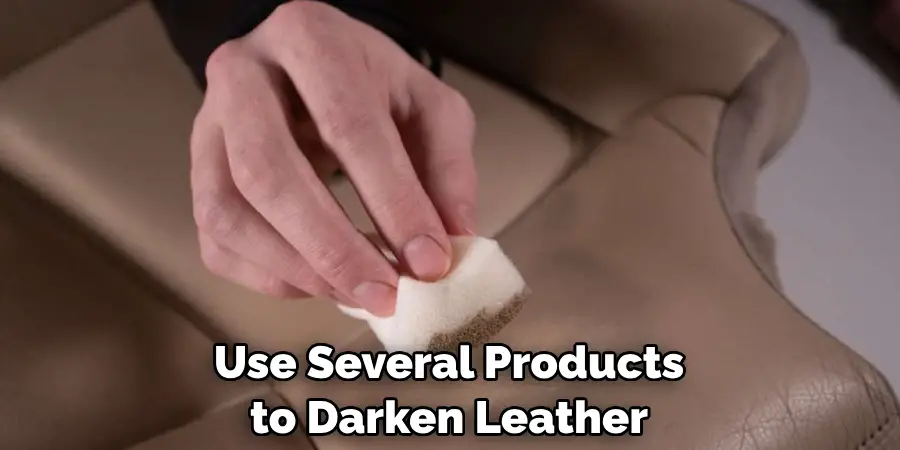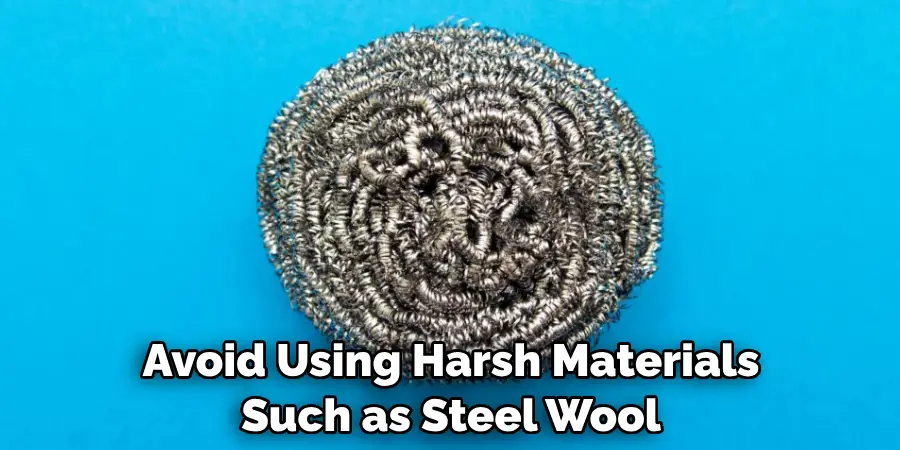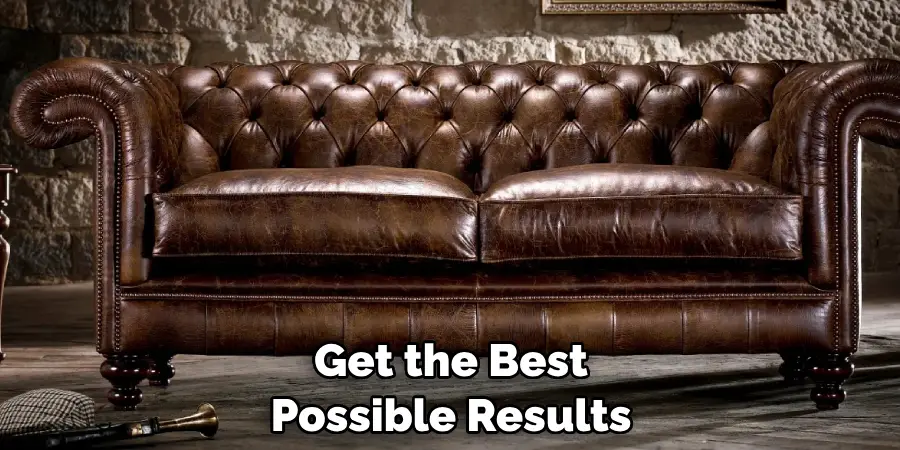Antiquing leather is a great way to add character and charm to your leather items. It also gives them an aged, vintage look that will turn heads. Antique leather items have been around for centuries and are still popular today. You can antique any leather item, from furniture to accessories like purses or wallets, with just a few easy steps.
There are many advantages to antiquing your leather items. It is a great way to increase the item’s longevity, as it protects against wear and tear. Antiquing also helps bring out the natural beauty of the leather, such as its original color or texture.

The process can also help to make an item look unique since every piece of antique leather will be different. In this blog post, You will learn how to antique leather in detail.
Step-by-Step Processes for How to Antique Leather
Step 1: Inspect the Item
Before you start, it’s important to inspect the item. Look for any rips or tears that may worsen with antique leather treatments. Gently clean the leather surface using a soft cloth and warm soapy water. Make sure to remove all dirt before beginning the antiquing process.
Step 2: Apply the Oil
Apply a few drops of oil to the leather surface using a lint-free cloth. Olive oil is ideal for this process and will help darken the leather. Rub it in until it’s absorbed into the leather. Apply a coat of wax to the leather using a soft brush or cloth. A good quality leather soap is best, but you can also use a beeswax polish or any other item that will offer a protective layer of wax to the leather surface.
Step 3: Allow Time for Drying
Once the oil and wax have been applied, allow sufficient time to dry before continuing the antiquing process. Using a cloth, buff the leather. This will help to remove any excess oil or wax on the surface of the leather and increase its shine.
Step 4: Apply Darkening Agents
You can use several products to darken leather that still needs to be stained, such as tea, coffee grounds, egg yolk, and vinegar. Be sure to use a small amount of the product to test it on an inconspicuous area before you apply it all over the item.

Once you have applied the darkening agents, brush them onto the leather with a soft-bristled brush. This will help to distribute the product across the leather surface evenly.
Step 5: Allow Time for Drying Again
Allow sufficient time for the darkening agents to dry before continuing the antiquing process. Once all the other steps have been completed, it’s time to apply a top coat of wax. This will help to protect the leather and give it a beautiful sheen.
You can use these same steps to create unique pieces that look old and worn in all the right places.
Safety Precautions for How to Antique Leather
- Ensure you are working in a well-ventilated area to avoid fumes or inhalation of chemicals.
- Wear protective gloves and eyewear when handling hazardous materials like dyes or solvents.
- Use only the recommended cleaning products – see the manufacturer’s instructions for details.
- If using a spray, do not spray directly onto the leather – use a cloth to apply the cleaner.
- Do not wet the leather excessively, as this can cause it to crack.
- Avoid using harsh abrasive cleaning products or scrubbing materials such as steel wool to clean your leather item.
- When applying dyes or polishes, always test on an inconspicuous spot before applying them to the entire piece. This will help avoid any unwanted color build-up or blotching.
Following these safety precautions ensures your leather item will remain in great condition for years. Whether it is a vintage leather chair or an antique belt, these tips are essential for easily antiquing your leather pieces.
How Do You Prepare the Surface for Antique-ing?
For the antiquing process to be successful, the leather surface must be prepped and cleaned. This step will ensure that the oils, dirt, and existing dye will not interfere with the antique-ing process. Start by wiping down your item with a damp cloth to remove dirt or dust particles.

Follow up by cleaning the surface with a leather cleaner and reading the instructions carefully. This will eliminate any residue and prepare the surface for dyeing. Once you have finished cleaning your item, allow it to dry completely before applying any dyes or polishes. If you are ready to start antiquing your leather pieces, follow these steps for clean and successful results.
Do You Need to Be Careful About Which Products You Use for Antiquing?
You must use the right products to achieve a successful antique-ing effect when it comes to antiquing leather. Be sure to read the instructions and labels carefully before starting any project. Avoid using harsh cleaning agents or abrasive materials such as steel wool – these can damage the surface of the leather.
Choosing the correct dye for your specific leather item, test a small area before applying it to the entire piece. Using the right cleaning and dyeing products ensures that your antique-ing project is successful and will last for years to come. With these tips in mind, you’ll be able to antique your leather pieces easily.
Are There Any Common Mistakes to Avoid When Antique-ing Leather?
When it comes to antique-ing leather, a few common mistakes can be easily avoided. One of the main errors is applying too much pressure when rubbing in dye or polish. This can lead to the leather becoming discolored or blotchy in certain areas.
It is also important to allow plenty of time for the leather to dry before applying further dye or polish. Wetting the leather excessively can cause it to crack and become brittle.
Finally, make sure you use only a soft cloth when cleaning your item; avoid using harsh materials such as steel wool, as this can damage the surface of the leather. By taking these simple precautions into account, you can ensure that your antique-ing project turns out exactly how you want it to. With these tips, antique-ing leather can be an enjoyable and rewarding experience.

How Do You Maintain Your Antique Leather Piece Over Time?
Once you have antique leather, the next step is maintaining and caring for your piece. This is especially important if you use your antique leather furniture daily to ensure its longevity and durability. The first step is to ensure your antique leather piece is not wet or overly exposed to water. Any exposure could cause harm to it over time, so make sure to keep it in a dry environment.
It is also important to regularly clean and condition your antique leather piece. This will help prevent any damage from occurring, and the leather will last longer. You can use a damp cloth for regular cleaning and a specific cream or wax for conditioning. Make sure to follow the directions on any product you use.
One of the most important things to remember when caring for your antique leather item is to avoid exposure to direct sunlight or very high temperatures. Doing so could cause irreparable damage.
Is There Anything Else You Should Be Aware of Before Starting the Antique-ing Process?
Yes, there are a few other things to remember before starting the antique-ing process. First and foremost, it’s important to remember that this is a lengthy process, and you could be working on your piece for hours, depending on its size.
It is also important to determine what type of leather you are dealing with before starting the antique-ing process. Different types of leather will require different techniques and materials to ensure the finished product looks great.
Finally, it is important to note that you may need help to achieve the exact look you envision when antique-ing your leather piece. This is because no two pieces of leather are exactly alike, even if they come from the same hide. Therefore, it is important to be patient and adjust to get the best possible results.

By taking the necessary precautions and doing thorough research beforehand, you can rest assured that your antique leather piece will remain in great condition for years.
Conclusion
In conclusion, antiquing leather is a great way to add character and value to any piece of leather. Even novice crafters can successfully antique their leather pieces with the right tools, materials, and guidance.
In most cases, the goal will be to take something tired and ordinary and turn it into something timeless and unique. Antiqued leather can be used for various applications, from furniture to clothing and even accessories, making it one of the most versatile materials.
With a little effort and patience, anyone can create an antique leather piece they’ll be proud to display. I hope reading this post has helped you learn how to antique leather. Make sure the safety precautions are carried out in the order listed.

